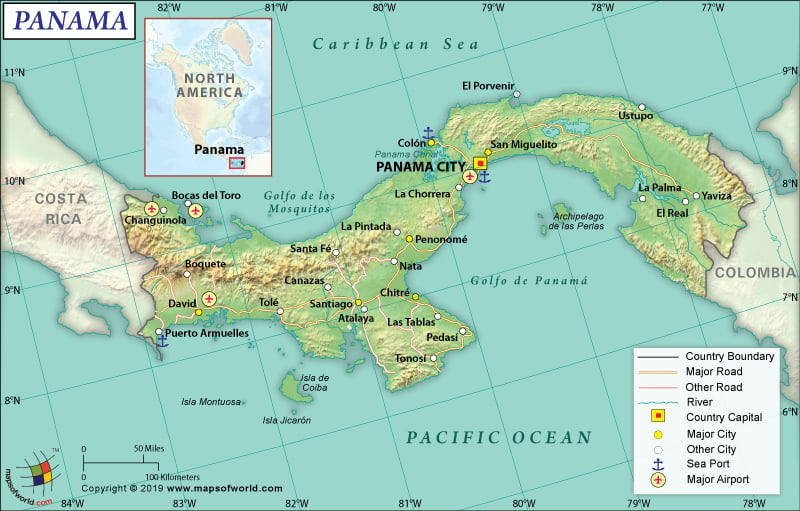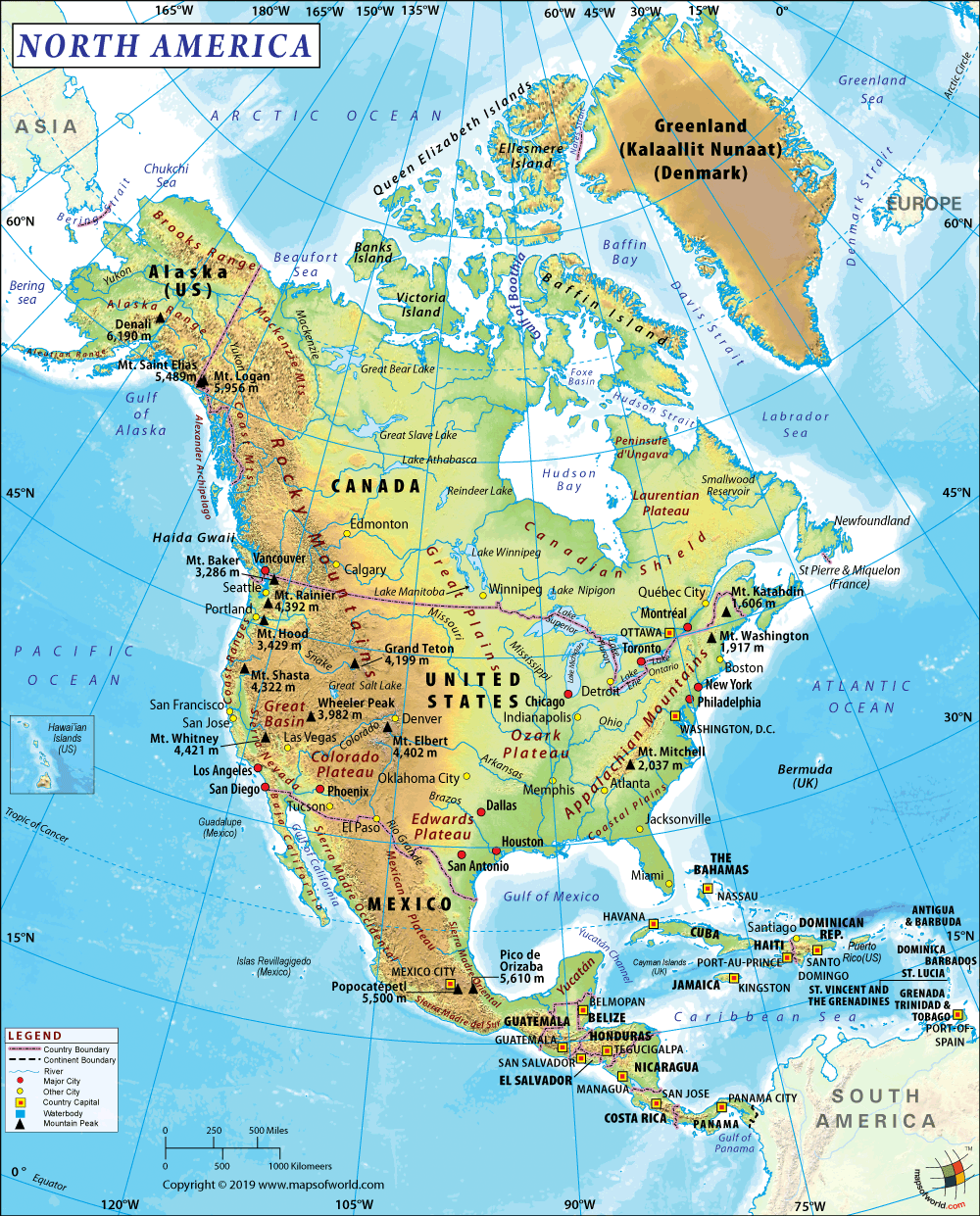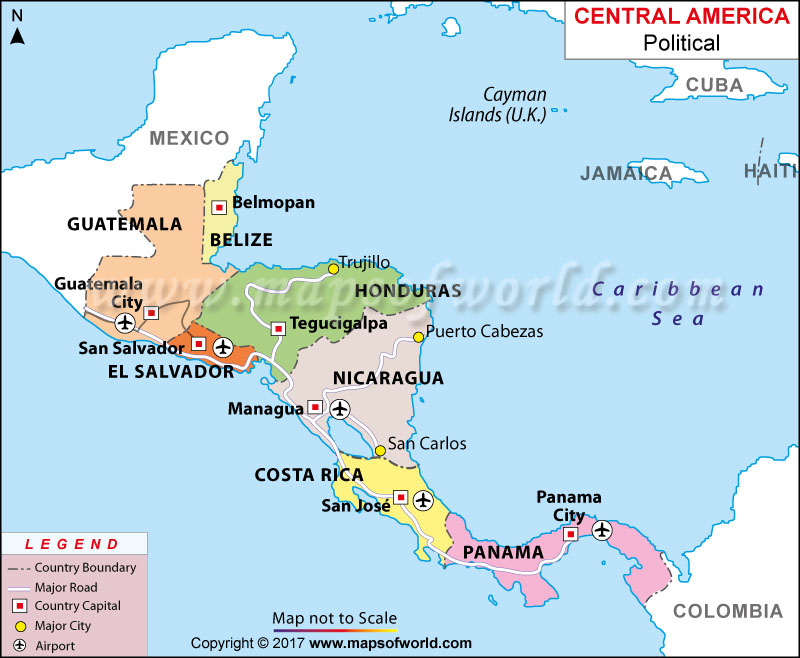What are the Key Facts of Panama?

|
Official Name |
Republic of Panama |
|
Continent |
North America |
|
Capital |
Panama City |
|
Largest City |
Panama City |
|
Coordinates |
9.000000, -80.000000 |
|
Area |
29,119 sq. mi (75,417 sq. km) |
|
Land Boundaries |
427 mi ( 687 km) |
|
Coastline |
1,547 mi ( 2,490 km) |
|
Currency |
Balboa (PAB), United States dollar (USD) |
|
Neighboring Countries |
Costa Rica, Colombia |
|
Population |
4,034,119 (2016 est.) |
|
Official Languages |
Spanish |
|
Major Religion |
Christianity |
|
National Day |
3 November (Independence Day) |
|
National Anthem |
“Himno Istmeno” |
|
Form of Government |
Unitary presidential constitutional republic |
|
President |
Laurentino Cortizo |
|
Vice President |
Jose Gabriel Carrizo |
|
GDP per capita (PPP) |
$ 25,508.6 (World Bank, 2018) |
|
GDP per capita (nominal) |
$ 15,575.1 (World Bank, 2018) |
|
HDI |
0.789 (2017), Rank: 66 |
|
Literacy Rate (%) |
95.41 (UNESCO, 2018) |
|
Space Agency |
NA |
|
Military Expenditure Ranking |
150 (SIPRI, 2017) |
|
No. of Olympic Medals |
3 (as of 2018) |
|
Driving Side |
right |
|
Calling Code |
+507 |
|
Time Zone |
UTC−5 (EST) |
|
Internet TLD |
.pa |
Where is Panama?
Panama is a Central American country that is located between Costa Rica and Colombia. It borders the North Pacific Ocean as well as the Caribbean Sea. The Pacific Ocean is located to its south, the Caribbean Sea to the north, Colombia to the southeast, and Costa Rica to the west.
What is the Geography of Panama?
Panama is spread across a total area of 75,417 sq. km (29,119 sq. mi), out of which 74,340 sq. km (28,703 sq. mi) is land area and 1,080 sq. km (417 sq. mi) water area. It has a 687 km (427 mi) long land boundary, which is shared with two neighboring countries: Costa Rica 348 km (216 mi) and Colombia 339 km (211 mi). The Republic of Panama has a 2,490 km (1,547 mi) long coastline.
The country has a volcanic origin and it remains covered by forest. The major landforms include mountains that cover from the Costa Rican border to Colombia. While Volcan Baru is the highest elevation point of the country at 3,475 m (2,159 ft), the lowest elevation point is the Pacific Ocean at 0 m (0 ft). Some of the major mountain ranges in the country are Central Mountains, Tabasara, Talamanca, and San Blas.
Panama’s sandy beach coastlines merge with the lowlands that are covered by forests. As you move towards the inland mountain ranges, these lowlands start rising into the foothills.
The Darien province (occupying around 1/3rd of eastern Panama) mainly consists of rain forests, swampy lowlands, high mountain peaks bordering these lowlands, and rivers. Darian Gap is located in front of the border area along Colombia. This part is covered by an almost impassable thick jungle.
Hundreds of small islands ring the coastline in the northern part of the coastline. These islands create the Bocas del Torro and San Blas Archipelagos. Some of the major islands in the southern coastline are Coiba, Cebaco, Taboga, and the Pearl Islands.
Panama is crisscrossed by hundreds of small rivers. Some of the major rivers in the country are Charges, Tuira, Santa Maria, San Pablo, and Chucunague.
A tropical maritime climate prevails in Panama. It has two seasons. While one is the hot and humid rainy season, lasting from may-to-December, the other is a short dry season, lasting from January to May. From the north to the south, the country is a narrow one geographically. This peculiar land structure leads to competing-weather-patterns that come from the Pacific Ocean and the Caribbean Ocean.
This country is situated outside the hurricane belt completely. Except for the earthquakes, Panama is hardly affected by any disaster. Several earthquakes take place here but only a few are felt. The temperature variation throughout the year is generally not more than 20 °C (68 °F), irrespective of the elevation.
The summertime starts in December and lasts until April. The rainfall starts gradually in May and frequent showers take place (1-2 hours) mainly in the afternoon. Daily downpours after thunderstorms, mainly in the mountain ranges, take place in July or August. Flash floods occur after these thunderstorms.
The mountainous ranges usually get many microclimates. Continuous rainfall for hours or days hardly takes place in the dry arc or Arco Seco region. From north to south, strong trade winds blow constantly. That’s why Bocas del Toro and other locations on the Caribbean Coast get twice the amount of rain as the Pacific Coast. Though Panama is located outside the Caribbean Coast’s hurricane belt, the further north gets the tropical storms’ leftovers.
During dry seasons, higher than average winds blow in the highlands. In the rainy season, high humidity levels persist in the highlands. Less wind, as well as humidity, can be experienced in the lowland areas.
What is the Economy of Panama?
Panama is a well-developed service sector-based economy. Tertiary sectors account for 3/4th of the economy’s GDP. The major service sectors thriving in the Republic of Panama include offshore banking, banking, tourism, flagship registry, container ports, insurance, the Colon Free Trade Zone, logistics, and operations on the Panama Canal. The economy got a shot in the arm because of the growth in the infrastructural development projects as well as the transportation/logistics services of Panama.
The nominal GDP grew at a rate of 3.7% in 2018 to reach US$65.055 billion. The major export items are Coal Tar Oil, Refined Petroleum, Bananas, Petroleum Gas, the Passenger/Cargo Ships, etc. The major import items are Crude Petroleum, Refined Petroleum, Oxygen Amino Compounds, Packaged Medicaments, Passenger/Cargo Ships, etc. Panama had a US$21.7 billion negative balance of trade in 2017. While the export was US$3.06 billion, the import was US$24.8 billion.
The rate of unemployment in 2018 was 6%, marginally less than 6.10% in 2017. The average rate of unemployment from 1963 to 2018 is 9.33%. The poverty rate in Panama (on the basis of Poverty headcount ratio at $5.50 per day) was 14.10% in 2017.
What is the Transportation System of Panama?
Panama’s transport system is pretty developed. While public transport (mainly buses) plays an important role, cars are mostly used for trips. Interamerican Highway, located in this country is the most important highway, helping in road navigation from the east to the west. There are 15,137 km (9,406 mi) long roadways present in Panama, out of which 6,351 km (3,946 mi) are paved and 8,786 km (5,459 mi) are unpaved. 149 km (93 mi) of expressways are there in Panama.
355 km (221 mi) of railway tracks (including standard, broad, and narrow gauge) are there in the country. Two metro network lines (opened in 2014 and 2019) are also there. These tracks have 1,500 V DC overhead electrification.
800 km (497 mi) of a navigable waterway is present in the country, which includes 82 km (51 mi) long Panama Canal. The major seaports of Panama are Cristobal, Colon, and Balboa. There are 7,914 merchant marine vessels.
There are 117 airports in Panama, out of which 57 have paved runways and 60 have unpaved runways. Some of the most important airports are Panamá Pacífico International Airport, Bocas del Toro “Isla Colón” International Airport, Changuinola “Capitán Manuel Niño” International Airport, David “Enrique Malek” International Airport, Albrook “Marcos A. Gelabert” International Airport, Scarlett Martínez International Airport, etc.
What International Organizations is Panama part of?
UN, WTO, IMF, WHO, Union Latina, UNESCO, ILO, BCIE, CD, CELAC, FAO, G-77, IADB, IAEA, IBRD, ICAO, ICCt, ICRM, IDA, IFAD, IFC, IFRCS, IMO, IMSO, Interpol, IOC, IOM, IPU, ISO, ITSO, ITU, LAES, LAIA, MIGA, NAM, OAS, OPANAL, OPCW, PCA, SICA, UNCTAD, UNIDO, UNWTO, UPU, WCO, WIPO, WMO, CAN (observer), ICC (national committees), Pacific Alliance (observer), UNASUR (observer), ITUC (NGOs), WFTU (NGOs)
Related Links:



